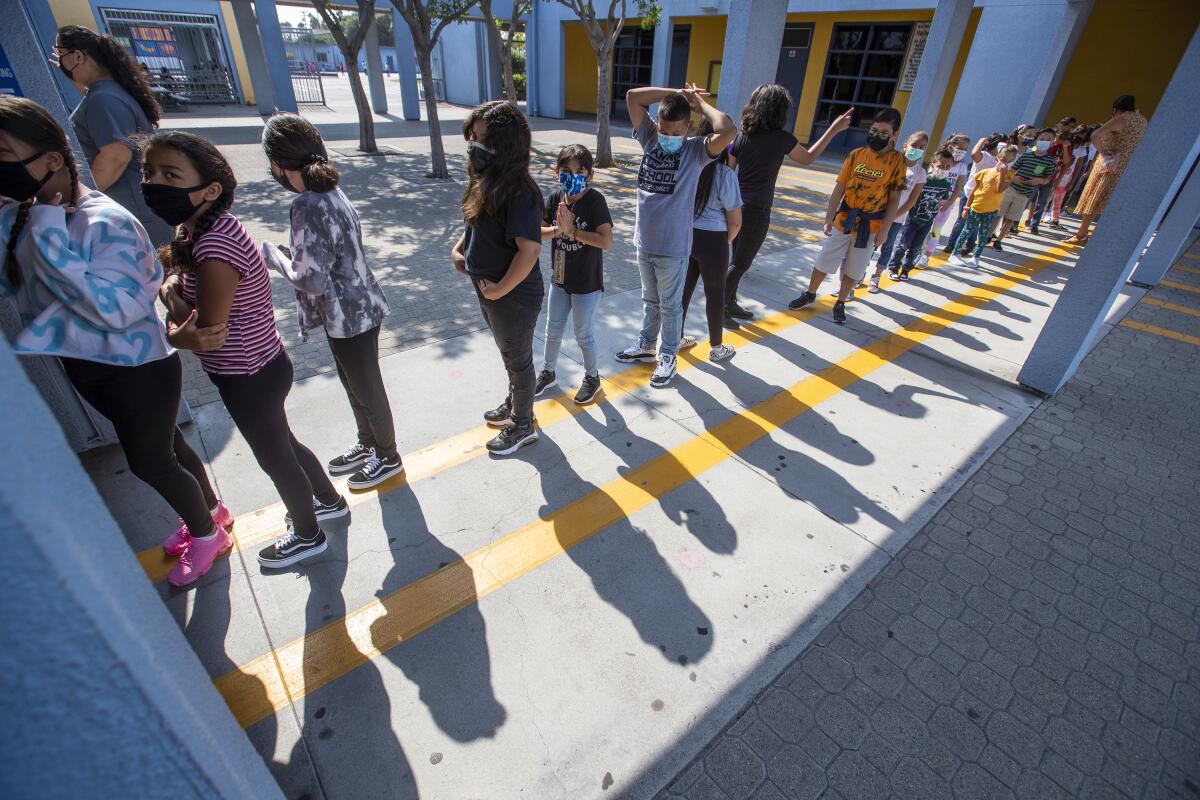What if we replaced public school districts with less rigid systems?

- Share via
America’s curriculum wars seem to be at their peak, with deep disagreement about how our country’s children ought to be educated. But the most bitter and consequential schooling wars in our nation’s history actually occurred in the last half of the 19th century between the white Protestant majority and the mostly Catholic minorities who had landed recently on these shores. The result of this conflict is the U.S. educational system that we know today.
Public schooling wasn’t always like this. American education up until then had been pluralistic. Counties and towns levied taxes for very different types of schools, from Lutheran and Congregationalist to Catholic, Jewish and nonsectarian. At the same time, these schools delivered a remarkably consistent body of academic knowledge from school to school.
By the early 20th century, however, our country had undone this model of educational pluralism, and with it the diverse structure and the common content that had worked for so long. This change has proved to be significant and long-lasting.
The Protestant majority rejected pluralism. They simply did not believe that Catholic immigrants could become democratic citizens. This 19th century nativism inspired political platforms and grass-roots zealotry that included demonstrations, the firebombing of Catholic neighborhoods, and anti-immigrant laws. For Protestant elites, nativist politicians and hate groups such as the Ku Klux Klan, Catholic schools posed an existential threat. By the early 20th century, state legislatures had narrowed “public education” from a plural to a uniform model: the district school we know today.
Thus, the American system entered the 20th century with a binary view of education — “public” versus “private” — and an increasingly localized view of the academic content. A rigid district structure and curricula that vary from state to state, city to city, district to district, and even classroom to classroom became the norm. It works well for many families in our country.
At the same time, the uniform structure prevents many parents, particularly low-income ones, from finding schools that may be tuition-free — through education tax credit programs or, in some states, vouchers — that reflect their beliefs and their children’s needs. And academic content that differs substantially by school system, and even by classroom, inhibits common reference points drawn from history, geography, literature and so on, that can support democratic deliberation.
But what if we flipped the American model to one of more diverse school structures and more common content at the state level? This model of educational pluralism was enjoyed by our country at an earlier time. It is also still the norm in democratic societies worldwide today.
Educational pluralism allows for a nimble structure that can avoid constant conflict, because it honors diverse values by design. Supporting and assessing common curricular frameworks across all school systems in a state (or between states, voluntarily) can help enhance social cohesion.
Educational pluralism means that countries as different as Belgium, Indonesia, Israel, France, Sweden, Australia and most provinces of Canada fund and regulate a huge variety of school types. These systems separate the ethos of the schools — whether Montessori, Islamic, Protestant or secular — from the academic content of the school, which must reflect, at least in part, similar academic content and assessments.
With the most diverse school system in the world, the Netherlands epitomizes educational pluralism. The Netherlands funds 36 different kinds of schools equally and evaluates all of them through the same rigorous site visits, curricula and assessments. The system includes tax-funded creationist schools — a policy that would light most Americans’ hair on fire.
However, the Netherland’s Ministry of Education requires all students to demonstrate mastery of evolutionary theory, which means that even kids in creationist schools need to understand evolution enough to pass hefty exams. The Ministry of Education also requires all funded schools to teach comparative religion and ethics. The one-third of the Netherlands’ students who attend “district” schools must, therefore, join their peers in Jewish and Montessori schools, for instance, in learning what Hindus and Muslims believe.
In fact, most industrialized countries require wide lenses on the world, even as they fund schools with distinctive worldviews — thus providing the opportunity to encounter new ideas.
Such policies cut against the grain of what U.S. public education has meant for a hundred years. Educational pluralism is opposed by those who support uniform educational delivery and libertarians who reject government accountability alike. Educational pluralism is not perfect. It must be carefully designed to ensure equal access to excellence and to meet constitutional guidelines established by the Supreme Court. But it does suggest a democratic path with the potential to lead the American educational system into a more generous space.
Ashley Berner is an associate professor and director of the Johns Hopkins Institute for Education Policy.
More to Read
A cure for the common opinion
Get thought-provoking perspectives with our weekly newsletter.
You may occasionally receive promotional content from the Los Angeles Times.









